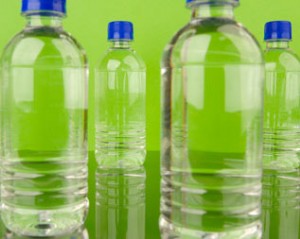 As mentioned in my previous post on Eco-Friendly packaging, the question was asked, “how can we develop the most cost effective packaging solutions that will fit into the design, marketing and functional needs?†Well, a big part of that equation comes in the form of plastic. Plastic has been great for consumers and without a doubt, has allowed human kind to progress beyond anyone’s predictions.
As mentioned in my previous post on Eco-Friendly packaging, the question was asked, “how can we develop the most cost effective packaging solutions that will fit into the design, marketing and functional needs?†Well, a big part of that equation comes in the form of plastic. Plastic has been great for consumers and without a doubt, has allowed human kind to progress beyond anyone’s predictions.
However, today we are literally choking on the stuff and we need to find alternatives and more ways to recycle and reuse ASAP.
In this post we will provide examples of some businesses currently recycling conventional plastics as well as those who now using, or are beginning to explore, biodegradable plastic as an alternative. In addition, there are those who advocate a shift in the way we do business which may also be a part of the answer to realizing new business models that are profitable and environmentally responsible.
In the not too distant future it is predicted that many, if not most, manufacturers will embrace using biodegradable plastic for products and packaging, not because it’s eco-friendly, but more importantly because it will make good business sense. We are well aware that the environmental hazards of plastic trash are growing exponentially, therefore it’s imperative (after being with us for 100 or so years) that we find alternatives to oil and natural gas based plastics.

The immediate priority is to continue finding more cost effective ways to recycle and re-use the tons and tons of plastic that continues to accumulate on land and in the oceans around the globe.
TieTek is a great example of a company that uses all kinds of recycled plastics and tires to manufacture rail ties. The Texas based company, “uses 2 million plastic bottles, 9 million plastic bags and 10,000 scrap vehicle tires” to produce 3,300 standard rail ties.
Patagonia makes trendy outdoor clothing from plastic bottles and polyester.
WastAway.com is a Tennessee company that “takes all kinds of ordinary garbage and creates a product that can be converted into electricity, synthetic fuels, steam, building materials and soil amendments”.
The low-cost housing developer, Affresol, “developed a new material called Thermo Poly Rock (TPR) from recycled plastics and minerals for use as a structural building product.”
The British company, Symphony, which uses d2w, has developed a way of making plastic that allows it to become biodegradable. The company, best known for its biodegradable doggy bags, states that “the d2w® additive put into the plastic at the extrusion stage will make the finished product “oxo-biodegradable” so that it will degrade and disappear in a short timescale, leaving no fragments, no methane and no harmful residues.”
Carpet manufacturer FLOR has a new approach to sustainability that turns “the traditional “take / make / waste” industrial system on its head.”
Next up is finding alternatives to conventional plastics. Although there are many companies that are listed as offering biodegradable plastic packaging and products the industry still isn’t quite mainstream.
The question now is how do we get there? How can we make the changes that will affect consumer behavior (aka: our disposable lifestyle) to allow biodegradable plastics to become more competitive and cost efficient? There are many ways to become a catalyst for positive change in this arena.
From this writer’s point of view, biodegradable plastic products will need to be designed and marketed in a manner that will include “simple, eco-innovative changes” but will also continue to focus on lifestyle, convenience and cost. And the fact that these biodegradable plastic products will not be harmful to the environment will soon become a given. Like many other common household products it will soon be expected that the product is made from biodegradable plastic, similar to when gasoline went completely unleaded or when Styrofoam was produced without CFCs, consumers will assume these “environmental†changes in our products as being a matter of fact.
Finally, the way we currently do business must also be addressed when considering the switch to biodegradable plastics and finding more ways to recycle. Juliet Schor advocates that our current “business as usual” (BAU) attitude is part of the inertia that prevents us from making these big changes – and this writer would include the switch to biodegradable plastic is part of that idea. Her latest book, Plentitude, is about “getting us on a path that reverses the rampant destruction of the planet caused by BAU and restoring true well-being to people and communities.”
Jonathan Fields also backs this idea up in a similar manner. “A growing movement of C-suite executives who strive to build powerful, impactful organizations that profit and maximize shareholder wealth not as the result of the more traditional crush, dominate, slash and burn approach, but rather as a byproduct of a fierce sense of corporate citizenship. And, I am stunned at how profitable some have become.” It’s this realization of changing the way we conduct business that will allow biodegradable plastic and more efforts to recycle to become prevalent – and profitable.
From a marketing perspective, the focus should be on the benefits of the product that is made of recycled or biodegradable plastic and again, the environmental benefits can be listed but not as the headline. After all, good marketing is about the function and design of the product that affects one’s lifestyle. Sure, feeling good about doing the right thing for the environment is good, but check out Patagonia or FLOR and you’ll see they’re all about the product first. The positive environmental impact for them becomes a natural part of their product development and design thinking, instead of opportunistic marketing fodder.
This post can also be viewed at Science Creative